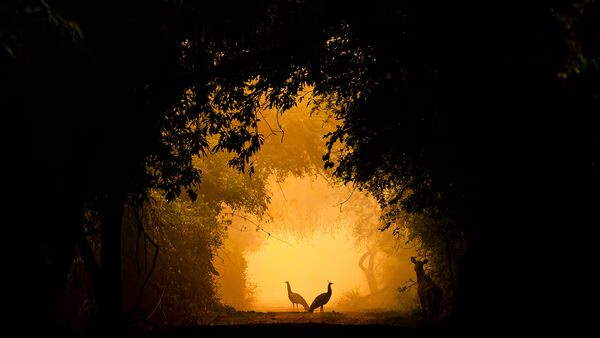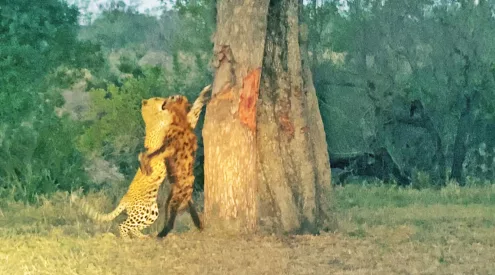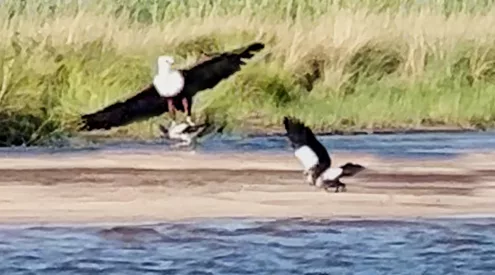There is something special about venturing off into the dark African night. As you add layers of warm clothing, the excitement about possible sightings builds. Perhaps you’ll spot leopards hunting, bushbabies playfully jumping between branches or you could be lucky enough to see the glow of a chameleon as your torchlight brushes past.
The bush comes alive when the stars come out and a sunset or night drive can be the highlight of a visit to a national park or reserve. This is a chance to see animals you wouldn’t glimpse in daylight: owls, nightjars, aardwolves, civets, porcupines and grounddwelling spiders.
It’s an opportunity to watch secretive nocturnal species from behind a powerful spotlight and to see how diurnal animals change their behaviour. Of course, you can lose yourself in the beautiful African sky with its abundance of stars. As you search for the Southern Cross and Scorpio, be quiet and take in the sounds of the night.
To make the most of an evening in the bush, keep the following in mind:
- Take warm clothes and blankets as it can get chilly on an open vehicle, even in summer.
- Take binoculars, even though it’s dark, and protect yourself with mozzie repellent.
- Use the opportunity to learn. Ask questions about the fl ora and fauna – guides are welltrained and knowledgeable.
- It’s best to have a light with an infrared cover, so you don’t temporarily blind animals. If this isn’t possible, use a spotlight to pan across the ground and trees to pick up the beam’s reflections in eyes, but be considerate to the animals.
- It’s not about how many animals you see; it’s about experiencing the sounds and smells of the bush as well as the possibility of seeing things you wouldn’t during the day.
Bushbabies
One nocturnal animal sure to keep you entertained is the acrobatic thick-tailed bushbaby (Galago crassicaudatus), which is 73 centimetres long, tail included. The lesser bushbaby (Galago moholi) is only 37 cm long. They’re easy to spot during night drives as their eyes look like orange reflectors.
They have an excellent sense of smell to distinguish tracks and territorial boundaries of other bushbabies, which are marked with a secretion from glands on the chest. Their eyesight is keen and hearing is sharp to warn them about approaching predators. They also use these senses to detect the delicate sounds of prey such as lizards.
Bushbabies prepare for the night-time adventures by carefully grooming from head to toe. They wash the soles of their feet with urine to make them more adhesive and to assist in marking territory.
If you can’t spot them, listen for their call: a harsh and repetitive wail, much like a crying baby, which gave them their name.
Sources:
- The Guide’s Guide to Guiding by Garth Thompson, Russel Friedman books
- South African Wildlife: A Guide to Our Mammals, Birds, Reptiles, Insects, Fishes, Amphibians, Invertebrates (Reader’s Digest, 1989)


















